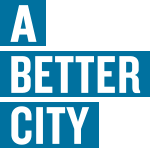Creating a Free Resilience Toolkit for Building Owners and Managers
October 19, 2015
research paper It’s been three years since Hurricane Sandy struck the East Coast, undoubtedly one of the biggest wake up calls to commercial real estate owners about the realities of sea level rise caused by climate change and severe weather events. The need for resilience is now apparent, but there is limited consensus on whether action should begin at the building, district or regional level. These are some of the issues A Better City is wrestling with on behalf of our membership, which includes a representation of Boston’s largest building owners, employers, and institutions. Earlier this year, A Better City published its first set of guidelines and recommendations for buildings to prepare themselves for the effects of climate change, which have been incorporated into an online building resilience toolkit and will soon be incorporated into our Challenge for Sustainability program. A Better City isn’t the only organization working to provide building owners with information about how to protect their assets from the effects of climate change and severe weather events. Other organizations, geographically spread across the United States, are also starting to develop checklists and other systems for buildings to learn about the opportunities for reducing risks to their buildings. A Better City will continue to monitor these initiatives as they evolve; opportunities may emerge to leverage resources and work together with these initiatives. The organizations creating these checklists and other systems are a mix of established and emerging players:
- RELi, developed by Perkins+Will, is a resilience standard designed to encourage businesses, planners, and project developers to build and operate facilities that can better withstand shocks including those from climate change, severe weather, sea-level rise, drought, and heat waves. The standard’s structure, the Resiliency Action List + Credit Category, is similar to the USBGC’s LEED reference guides and has 194 actions: some requisites, mostly credits. Its goal is also to reduce insurance rates by having safeguards in place for emergencies and by demonstrating resource efficiency.
- Expected to launch in October 2016, The Los Angeles Building Resilience Initiative is developing a resilience rating system for existing building operations and maintenance using tools and resources from green buildings and the social justice and emergency preparedness communities. Initially a project within the USGBC Research Department, the Initiative is now proceeding as a USBGC-LA project. The Initiative will recognize building owners as leaders in the arena of resilience and will allow them to incorporate resilience into all aspects of operation, expand skills and leadership potential for organization and community stakeholders, and help them implement and maintain resilience strategies over time.
- The USGBC released a tool at the end of 2013 to screen LEED credits in four rating systems to identify climate sensitivities and prioritize opportunities to promote climate resilience through green building practices.
A Better City’s building resilience toolkit provides building owners with information about potential structural interventions that can be used to protect their assets. In addition to providing a description of each technology, information about whether it’s targeted for buildings inside or outside the floodplain, potential cost, regulatory touchpoints, financing and incentives, local vendors and case studies are also provided. The toolkit was developed to accompany ABC’s research paper on climate adaptation in buildings to support the City of Boston’s Climate Action Plan. As specific needs are identified or new advancements in technologies are achieved, additional research is being conducted by ABC. The most recent addition to our toolkit is an in-depth briefing document on passive flood barriers, which presents a detailed overview of three systems currently on the market. ABC provides the building resilience toolkit and its associated sustainability toolkit as public resources for all to learn about how they can create sustainable and resilient buildings and worksites. The toolkit is a living database that we hope will continue to grow over time. We encourage you to send us any information or updates on current technologies, new technologies, and technologies under development!



